How to Make Mozzarella Cheese at Home Easy
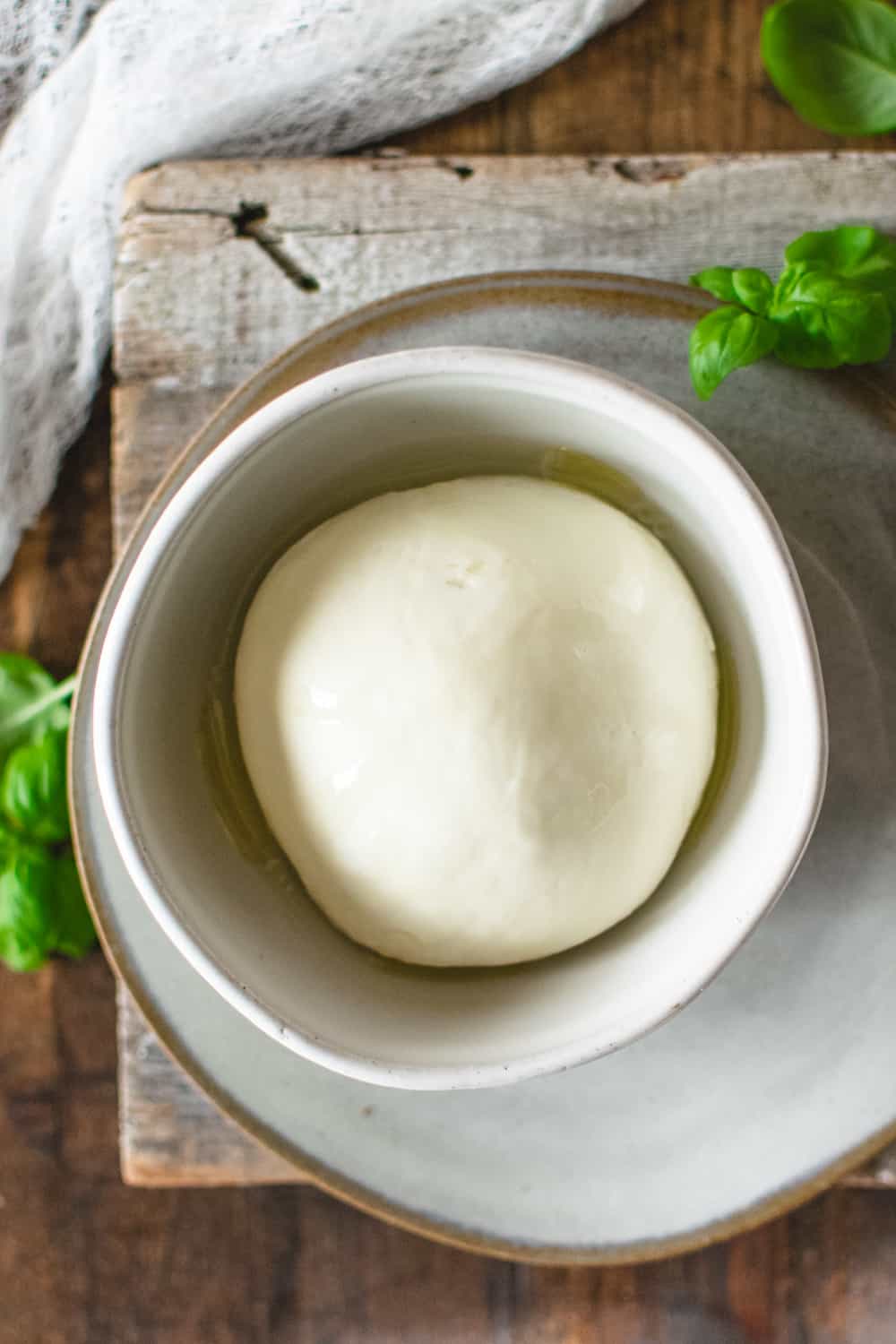
With this easy recipe, you can learn how to make mozzarella cheese at home in about 30 minutes! Includes both microwave and water bath techniques, so that you can make this no matter what.
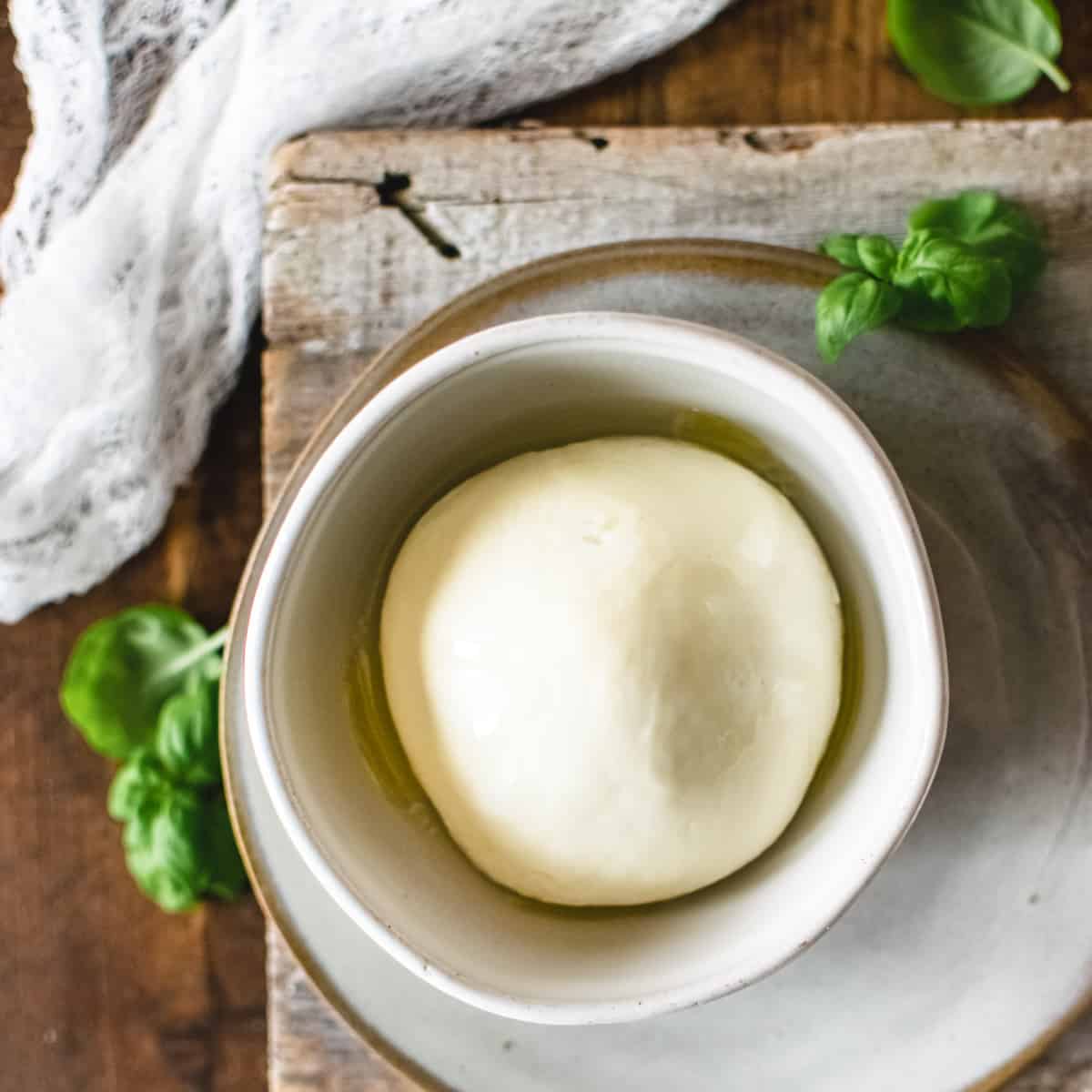
If you have ever made homemade mozzarella cheese before, you know how delicious it can be. Just like homemade ricotta, it's an easy cheese that you can make at home in a matter of minutes.
If you are new to making homemade mozzarella cheese, and you feel intimidated, don't be.It's easier than you might think.
What you need
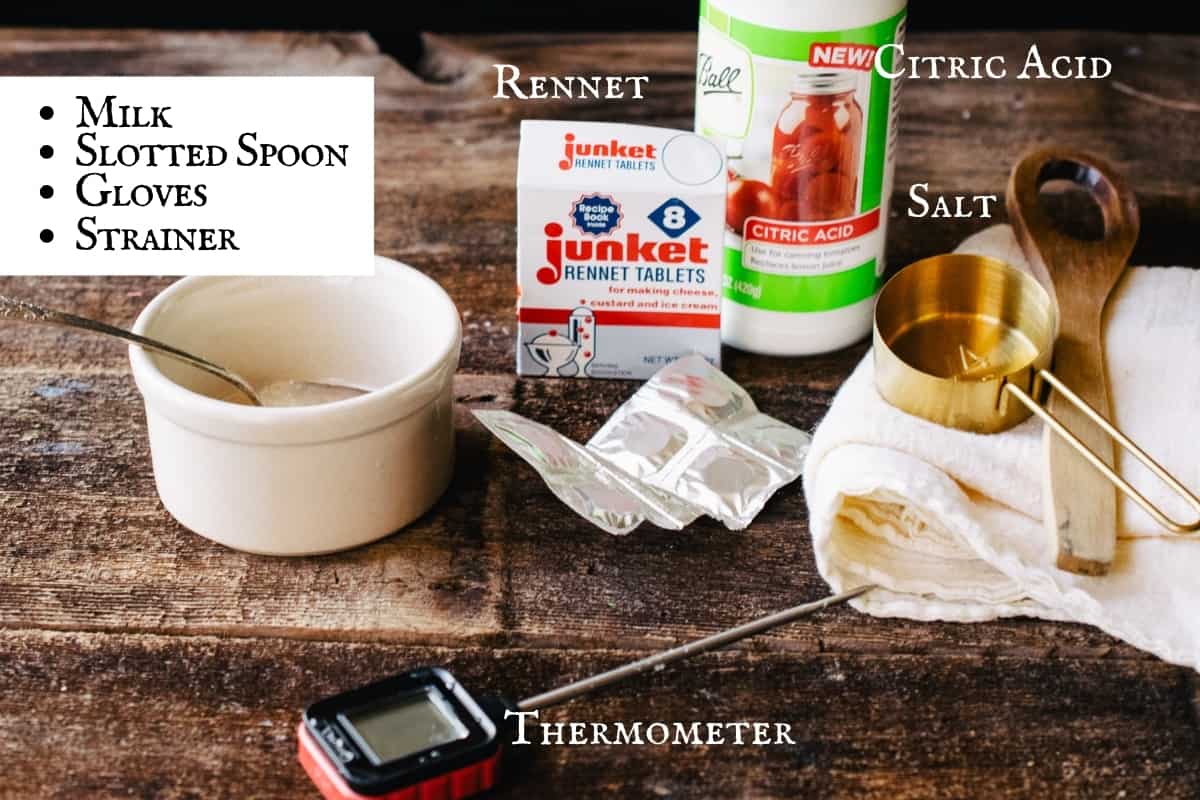
Milk
- Whole milk from cows is the best, however, you can use 2%, 1%, or even skim milk . If you choose skim, you will likely end up with a less flavorful mozzarella cheese.
- Stay away from UHT pasteurized milk . This is milk that is pasteurized at very high heat, effectively destroying enzymes needed to make the milk coagulate. You will end up with a soupy cottage cheese like mixture.
- Unfortunately, most organic milks are UHT pasteurized . Check the label on the carton; homogenized, and pasteurized are fine.
- Raw milk, or farm fresh milk can be used, but if you are pregnant or nursing then check with your doctor first.
Rennet
Rennet comes in tablet and liquid forms.
Typically, you can use either ¼ of a rennet tablet or ¼ teaspoon of liquid rennet.
Junket brand rennet
If you are using Junket brand rennet tablets you will need to use two tablets for this recipe. For some reason, it's formulated differently than other rennet.
Citric acid
Citric acid is just the same thing that is found in citrus fruits that makes it tart. We use it to help coagulate the milk. You can find it at almost any grocery store in the canning section.
Choose citric acid powder, like Ball brand.
- You must have an instant read thermometer that can tell you immediately when the milk has reached certain temperatures. An instant read digital thermometer works great here.
- A slotted spoon, for scooping the large curds.
- A colander, strainer, or cheese cloth for draining the initial whey off.
- You will need gloves because you must handle, squeeze and stretch the cheese when it's very hot. Heat safe gloves, like rubber cleaning gloves (unused) work great. I've also been able to wear two pairs of regular nitrile gloves; make sure they are powder free.
- A large pot, extra bowls, spoons, or cups. Use what you have on hand already in your kitchen.
How to make it
The directions can be organized, and more easy to follow, if we divide them into phases. We can label them in order, as follows: the first heat, coagulating, the second heat, straining, and stretching.
First heat
Let's refer to the beginning phase as "The First Heat" because there are separate times that you heat the curds, and they have their own, specific steps.
To do the 'first heat', get your pot ready. You'll need a pot large enough to hold a gallon of milk.
Put the water and citric acid in and stir until it's dissolved. This can just be done on the counter top.
Then, pour all of the milk in and give a gentle stir to mix (photo 1) . You'll notice the milk begin to curdle a little bit already from the citric acid.
Take the pot to the stove top, and heat on medium high heat until the milk reaches 90°F. (photo 2) .
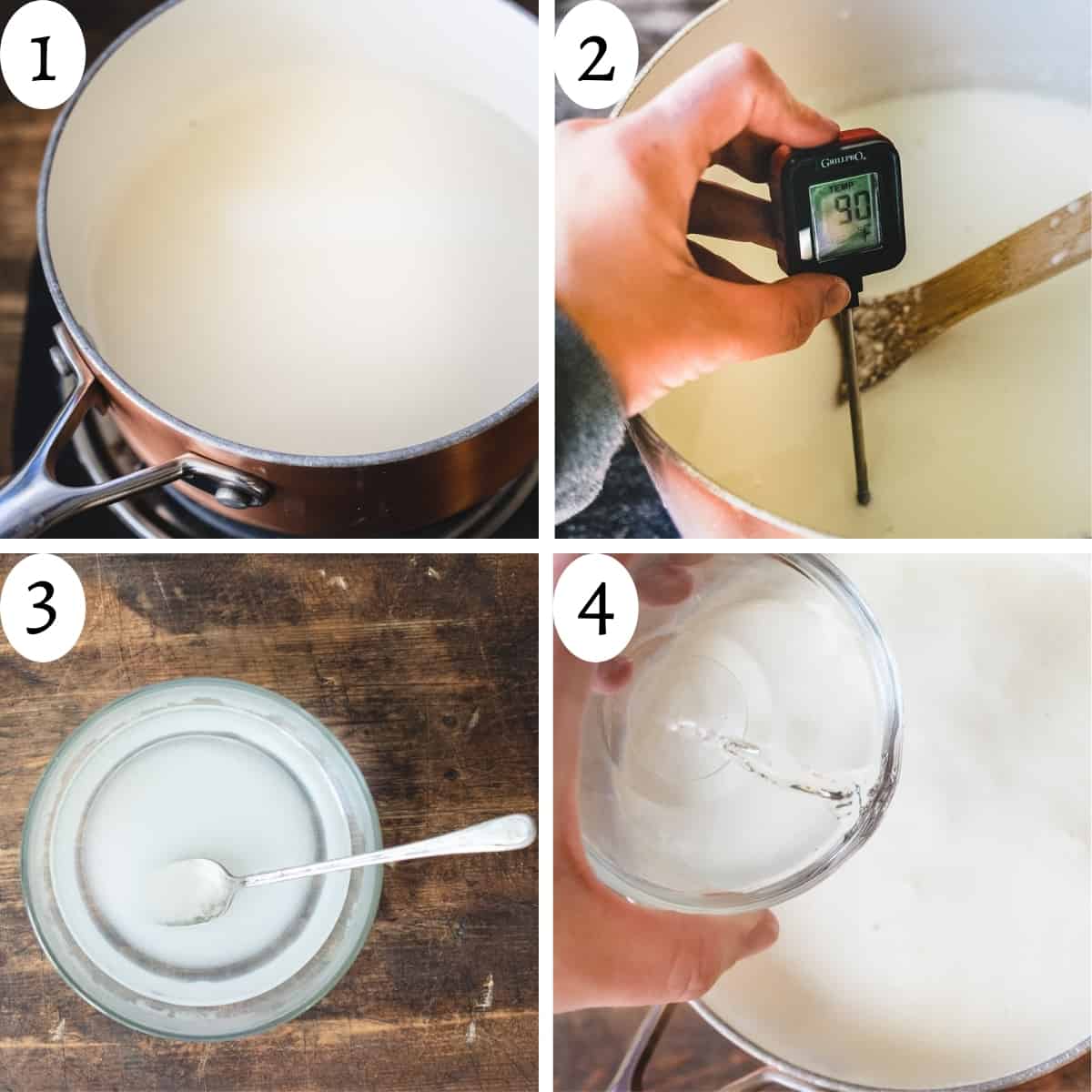
While the milk comes to temperature, stir the rennet and the water together until dissolved, and once it reaches 90°F, remove the pot from the heat and stir in the dissolved rennet (photos 3 and 4) .
Coagulating
With the pot off the heat, put the lid on and leave it undisturbed for 10 minutes. Don't remove the lid during this time. Don't stir anything.
The curds should come together and form a more solid mass during this time.
After 10 minutes, remove the lid. Use a long knife or offset spatula and cut a grid shape in the pot, as shown below, reaching all the way to the bottom of the pot.

*If it hasn't formed a congealed looking mass, give it another 10 minutes longer, covered and undisturbed.
Depending on the quality of milk you used, and how high it was heated during the pasteurization process, you may have loose squares or tight, solid squares. Take note of your brand of milk at this point, because the more formed they are, the better.
Second heat
Take the pot back to the stove pot. On medium-high heat, heat the curds up to 105-106 degrees using your digital instant read thermometer.

Fold the curds just a little to distribute the heat, and avoid breaking them up too much. They should tighten up as they heat.
Once the curds have reached 105-106 degrees, remove them from the heat again.
Straining
Use either a colander, mesh strainer, or cheese cloth folded to three layers thick. Place the strainer or cheesecloth over a larger bowl, and carefully pour in the curds (photo 5 below) .
If using a colander, use a slotted spoon to ladle the curds out of the liquid and into the straining cloth or colander. (This is because strainers have larger holes, and you don't want to lose some curds through them, so carefully ladling them is a better option when working with colanders and strainers).
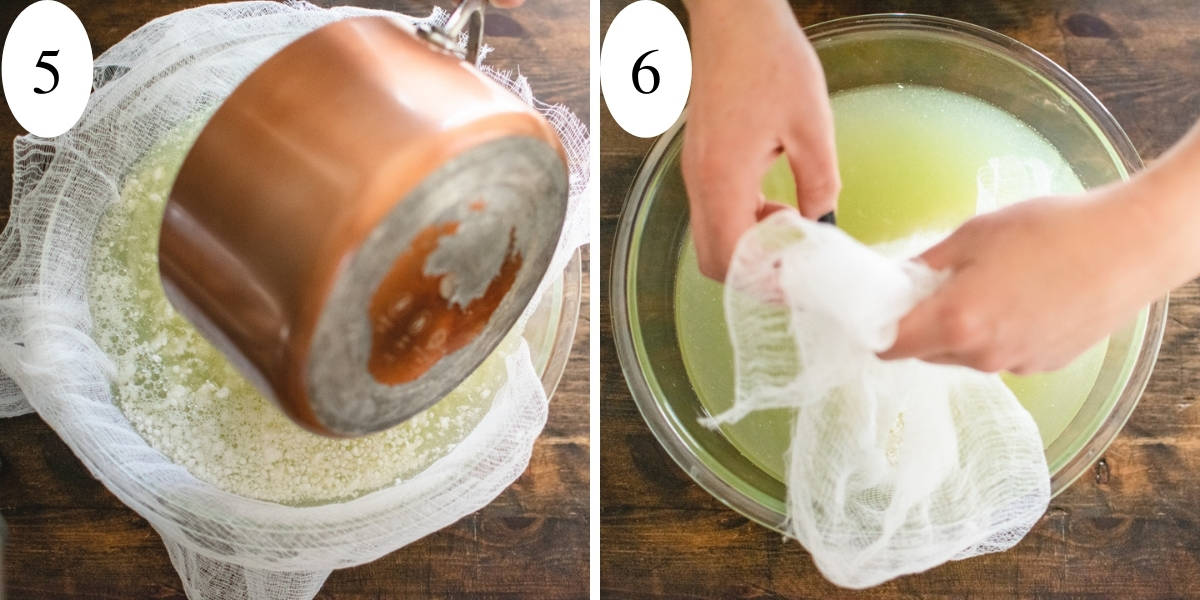
Gather the cheese cloth and pull it away from the whey (photo 6) , or lift the colander/strainer off of the bowl of whey.
You can discard the whey (the pale, thin liquid left behind from the curds), or see this resource for ways to use leftover whey.
Stretching
Welcome to the home stretch! Pun intended haha. This is the fun part.
You can do this in a microwave by transferring the curds from the cheesecloth/strainer/colander to a smaller bowl OR you can bring a pot of water to almost a boil (bubbles forming on the bottom of the pan).
The process is the same whether you choose the microwave or hot water method. The goal is to heat the curds to 135 degrees, slowly stretching and folding them, and squeezing off the last bit of whey as you go.
Put your gloves on now!
Salt the cheese
This is also the point at which you salt the mozzarella. Have a small pinch bowl of fine salt nearby, so that you can easily grab some and sprinkle it over. Keep in mind that you'll be wearing your gloves, so just get enough for the mozzarella cheese.
Back to stretching.
Microwave
If using the microwave method, I like to do 20 second bursts at 50% power. The reason for this, is that full power is just too hot; it overheats the curds and turns things into a soupy mess that ruins everything.
Remember, you can always do another few seconds, but you can't undo if you overheated them.
Microwave the strained curds on 50% power for 15-20 second "bursts" at a time.
With gloves on , fold the curds over themselves (photo 7) , squeezing them together and pouring off any excess whey as you go. Use a slight kneading motion. Repeat microwave "bursts" and folding until internal temperature register 135°F.

Sprinkle a little salt over the curds as you go, repeating the squeezing, stretching, and folding (photos 8-10) .
Don't over work the curds, or over stretch them unless you want a dryer mozzarella. Less working will give a looser moister mozzarella. Some stretching is needed to acquire the mozzarella texture.
Tuck the cheese into a ball, or multiple smaller balls, pinching at the bottom and allow to cool and harden. (If desired, drop the ball(s) into an ice bath to fast-set).
Store in an air tight container in the fridge for up to one week. Eat fresh, in salads, pizzas, cheese plates.
Enjoy homemade mozzarella cheese however you normally like to eat mozzarella!
Do I have to use rennet?
Mozzarella is a fresh cheese (as opposed to aged), and needs rennet to coagulate the milk into cheese.
Is it cheaper to make your own mozzarella?
Price varies depending on the cost of the milk that you purchase, but on average, homemade mozzarella cheese costs half the price as store bought. Using the whey further contributes to savings.
What kind of milk can you make mozzarella out of?
Whole, 2%, 1% and skim cow's milk. UHT (Ultra High Temperature pasteurized) milk will fail because the enzymes that coagulate have been destroyed by high temperatures; this often includes most organic milks. Pasteurized and raw milks are also fine.
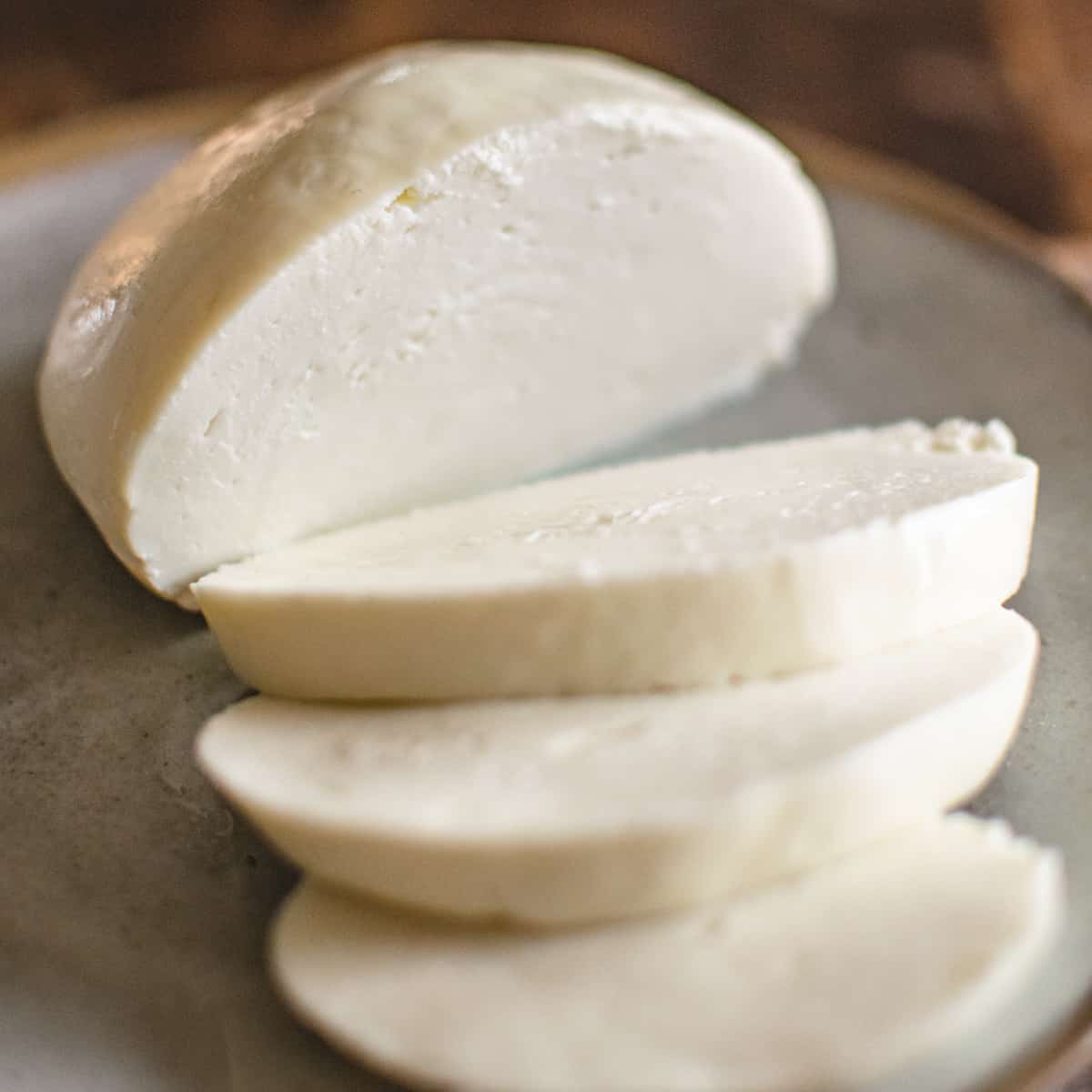
If you're interested in more delicious and easy to make homemade dairies, try Homemade Ricotta Cheese and my easy Homemade Butter. For a game day snack or dip for your next gathering, you've got to try this delicious Beer Cheese recipe too!
If you tried this homemade mozzarella cheese, please leave a comment and let us know how it went! People often use the comments to troubleshoot, so when someone is learning how to make mozzarella cheese for the first time--your own feedback can be super helpful.
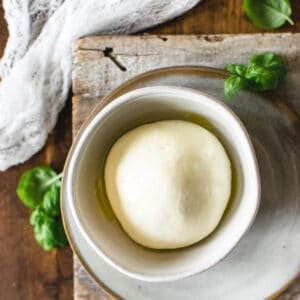
-
colander, strainer, or cheese cloth
-
instant read or digital thermometer
- 1 gallon whole milk can use 2%, 1% or skim; avoid ultra pasteurized
- ½ cup water divided in half
- 1 ½ teaspoon citric acid powder
- 2 junket brand rennet tablets Or ¼ tablet of non-Junket tablet brands, or ¼ teaspoon liquid rennet.
- 1 teaspoon salt
-
in a large pot, combine citric acid with ¼ cup water and stir until dissolved.
-
Add gallon of milk, stir, heat to 90°F using an instant read thermometer; remove pot from heat.
-
Stir rennet into water until dissolved.
-
When the milk and citric acid have reached 90°F degrees (use an instant read thermometer) remove from heat, stir in dissolved rennet until combined, and place a lid on it for 10 minutes. Do not touch or move or remove lid during this time.
-
After the milk has become coagulated, cut a criss-cross-like pattern/grid pattern through the pot, using a knife or an offset spatula, reaching all the way to the bottom of the pan.
-
Return the pan to the burner, and heat to 105-106°F degrees, only barely stirring to disperse heat, and not break up curds. Use an instant read thermometer to determine when the mixture has reached 105°-106°F degrees.
-
Using a large slotted spoon, or hand held strainer, transfer the curds to a fine mesh strainer or colander to drain. Or pour them over three layers of cheese cloth over a large bowl to catch liquid whey.
-
Gather the strained curds into a smaller, microwave safe bowl and microwave for 15-20 seconds at 50% power, kneading, folding, stretching, and pouring off excess whey in between burst until internal temperature of curds reach 135°F with an instant thermometer.
-
Once cheese becomes smooth and shiny, tuck it into a little ball, pinching it neatly underneath itself.
-
Drop it into an ice bath for 5 minutes (optional).
Double check that you are not attempting this with ultra high temperature (UHT) pasteurized milk. Pasteurized, and homogenized are both fine.
Hot Water Stretching Method:
At the point where you would microwave, instead heat a pot of water to almost boiling, remove from heat. Press and drain out as much liquid/whey as possible and submerge the tightened ball into the hot water (gloves on!). Stretch, fold, knead a few times. Salt with fine salt, checking that the curds have reached 135 °F internally, and tuck into a nice ball. If desired, drop in an ice bath to immediately "set" the cheese, but this is not necessary.
Enjoy!
Serving: 1 g | Calories: 147 kcal | Carbohydrates: 11 g | Protein: 8 g | Fat: 8 g | Saturated Fat: 4 g | Cholesterol: 24 mg | Sodium: 249 mg | Potassium: 319 mg | Sugar: 12 g | Vitamin A: 383 IU | Calcium: 267 mg | Iron: 1 mg
How to Make Mozzarella Cheese at Home Easy
Source: https://thefrozenbiscuit.com/mozzarella/